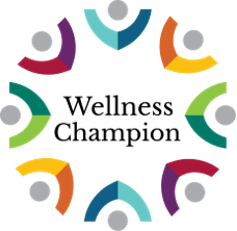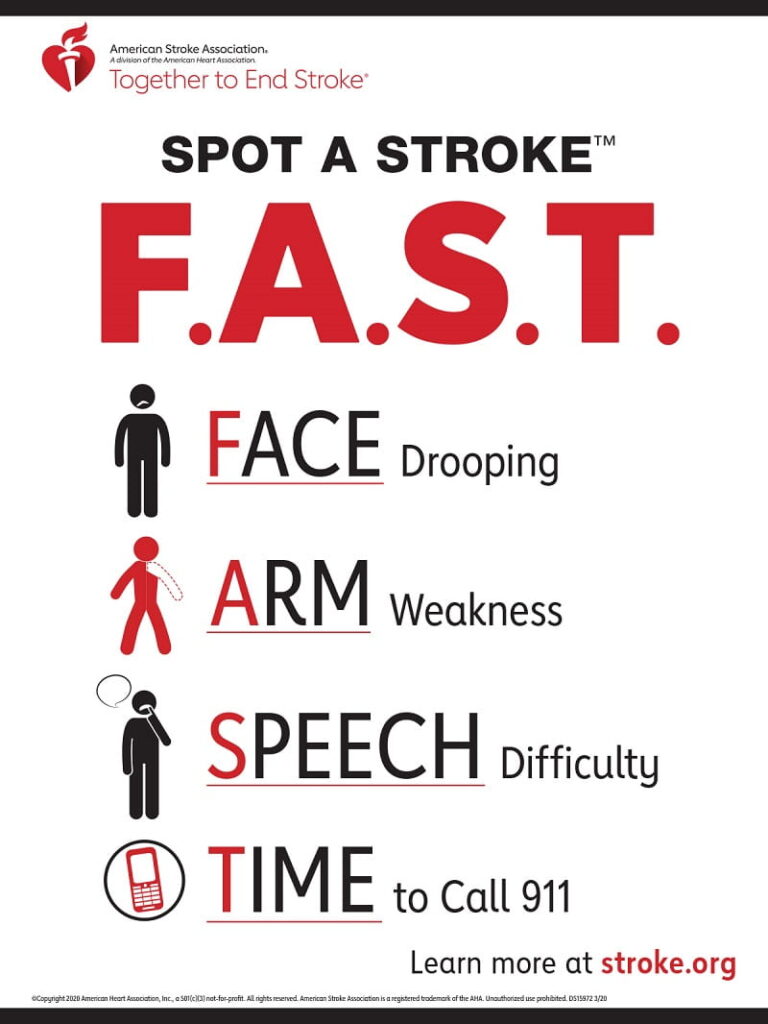
Prevention is the best strategy to help avoid having one
When it comes to dealing with strokes, every second truly does matter. Nearly 2 million brain cells die each minute a stroke remains untreated. And every 40 seconds, someone in the U.S. has a stroke. 795,000 strokes happen each year and chances are if you have one stroke… you’re more than likely to have another one. Statistics show of those 795,000 strokes, one in four have had a previous stroke. And the majority of strokes that happen are ischemic strokes, in which blood flow to the brain is blocked.
Strokes don’t discriminate….young, old, men, women…your health and prevention measures play a greater role in keeping you healthy. A stroke can happen in your home, the grocery store, at work, on a walk…anywhere. A stroke doesn’t differentiate and wait for the best possible scenario. Being ready and able to spot the F.A.S.T. stroke warning signs and call 911 could save your life or a loved ones. It’s important to keep in mind not all warning signs may take place…in fact you may only experience a few or you may have dizziness, confusion or even difficulty walking. The key takeaway is not to question but to call 911.
F.A.S.T. access to medical treatment often makes the difference between making a full recovery and suffering from a permanent disability.
Learn the stroke warning signs
Why is it important to call 911 vs drive yourself? Dr. Peter Panagos shares, “The earlier we treat, the better off you’re going to be. Earlier and faster treatment is always better. Because all the available therapies are time sensitive and the brain is very unforgiving about lack of blood flow.”
The brain has a short supply of useful nutrients and oxygenation and as soon as a clot shuts-off blood flow, there is damage to the brain. The longer you wait the less likely you are to have a complete recovery. That call to 911 is the best decision given EMS knows the place to take you for stroke care.EMS will call ahead to the hospital to give the staff a warning that you’re on the way. Local hospitals, such as BJH, Missouri’s first Comprehensive Stroke Center, have amazing advancements to help, they have all the experts in the region and nationwide to help take care of stroke patients.
For those of us in the St. Louis area, we have many stroke treatments available: intravenous meds given through IV to help break up clots as well as special catheters that can just like a heart attack go right into the brain and suck out the clot. Time though is critical. Up until a few years ago…3 hours was the window doctors could go in with the IV clot-busting. Now you have closer to 24 hours depending on the type of stroke and the hospital location of the patient.
“It’s key to speak with your primary care doctor if you have any risk factors for stroke. Ask them on how you can reduce the risk for stroke and heart disease. But if you ever experience some of the symptoms of a possible stroke, call 911 and the EMS providers will quickly transport you to the closest, most appropriate stroke center.
If you arrive early enough, we can make the correct diagnosis, intervene and also stop the stroke damage to your brain. This will increase the odds of a return to normal function. Also, we can then investigate why you had a stroke and prevent a future disabling stroke.”
Dr. Peter Panagos is a Professor of Emergency Medicine and Neurology at WashU and Co-Director of Stroke & Cerebral Vascular Center, Co-Director of BJC/WashU Stroke Network
You can do your part to help lower your risk of having of stroke by keeping your blood pressure in a healthy range. See your doctor if you suspect your blood pressure is elevated. Quit smoking. And if you have Type 1 or 2 diabetes, work to control your blood sugar and monitor to avoid concerning spikes throughout the day.
Aim for being physically active for at least 150 minutes each week. Go on a walk, ride a bike, use the elliptical…find a way to keep active and moving. Ask a friend to help motivate you if needed or go with you to a local gym or exercise class. Your diet does plays a key role. Try to stick to a wide variety of fruits and veggies, whole grains, healthy sources of protein and cut back on processed foods and added sugars.
WashU offers a Wellness Program as part of their 8ight Ways to Wellness and encourages annual health screenings to check A1c levels, blood pressure, cholesterol and other key indicators that are key in detecting disease early.
Be sure to take advantage of this provided program to help yourself stay on a path to health and wellness! Also visit the American Heart Association for more helpful tips and information as well as their Together To End Stroke Newsletter.

